


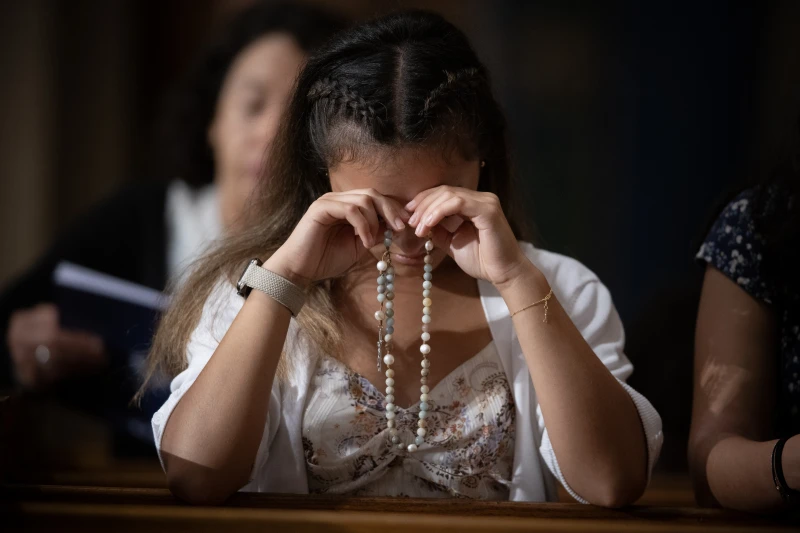

Washington, D.C. Newsroom, Oct 7, 2025 / 04:00 am (CNA).
October is designated by the Catholic Church as the Month of the Rosary, and Oct. 7 is the feast of Our Lady of the Rosary.
Here are seven common myths and facts about this devotion to Our Lady:
False. While rosaries are typically associated with Catholics, non-Catholics can certainly pray the rosary — and in fact, many credit it to their conversion. Even some Protestants recognize the rosary as a valid form of prayer.
False. Some have objections to the rosary, claiming it idolizes Mary and is overly repetitive.
Just like any practice, the rosary can be abused — just as someone might idolize a particular pastor or priest, a form of worship, or fasting. But the rosary itself is not a form of idolatry.
The rosary is not a prayer to Mary — it is a meditation on the life of Christ revealed in five mysteries “with the purposes of drawing the person praying deeper into reflecting on Christ’s joys, sacrifices, sufferings, and the glorious miracles of his life.”
When we pray the Hail Mary, we are not adoring Mary, we are asking for her intercession — just as we might ask a friend or family member to pray for us.
Second, any prayer can lose its meaning if we do not intentionally meditate on it. Focusing on the mysteries with purpose and intention is key to the rosary’s transforming power. As one author encourages: “The rosary itself stays the same, but we do not.”
It depends. It is typically considered disrespectful and irreverent to wear a rosary around one’s neck as jewelry, even though the Church does not have an explicit declaration against doing so.
However, Canon 1171 of the Code of Canon Law says that “sacred objects, set aside for divine worship by dedication or blessing, are to be treated with reverence. They are not to be made over to secular or inappropriate use, even though they may belong to private persons.”
It is important to treat the rosary with respect and intention. If you intend to wear the rosary as a piece of jewelry, this would not be respectful and should be avoided. It goes without saying that wearing the rosary as a mockery or gang symbol would be a sin.
But if it is your intention to use the rosary and be mindful of prayer, then it could be permissible. It is not uncommon in some cultures, like in Honduras and El Salvador, to see the rosary respectfully worn around the neck as a sign of devotion.
Rosary rings or bracelets might be a better option if you want to keep your rosary close at hand as a reminder to pray, as they are kept more out of sight and would not be as easily misconstrued to be a piece of jewelry.
False. A widely-shared 2022 Atlantic article went viral for accusing the rosary of being an “extremist symbol.”
“Just as the AR-15 rifle has become a sacred object for Christian nationalists in general, the rosary has acquired a militaristic meaning for radical-traditional (or ‘rad trad’) Catholics,” the article read.
The author also cited the Church’s stance on traditional marriage and the sanctity of life as evidence of “extremism” and claimed that Catholics’ tendency to call the rosary a “weapon in the fight against evil” as dangerous.
As CNA reported in 2022, popes have urged Catholics to pray the rosary since 1571 — often referring to the rosary as a prayer “weapon” and most powerful spiritual tool.
Untrue! Most of its words come directly from Scripture.
First, the Our Father is prayed. The words of the Our Father are those Christ taught his disciples to pray in Matthew 6:9–13.
The Hail Mary also comes straight from the Bible. The first part, “Hail, full of grace, the Lord is with thee,” comes from Luke 1:28, and the second, “Blessed art thou amongst women and blessed is the fruit of thy womb,” is found in Luke 1:42.
Finally, each of the decades prayed on the rosary symbolizes an event in the lives of Jesus and Mary. The decades are divided into four sets of mysteries: joyful, luminous, sorrowful, and glorious, the majority of which are found in Scripture.
Somewhat true. A rosary pea, or abrus seed, is a vine plant native to India and parts of Asia. The seeds of the vine, which are red with black spots, are often used to make beaded jewelry — including rosaries. Rosary pea seeds contain a toxic substance called “abrin,” which is a naturally-occurring poison that can be fatal if ingested. However, it’s unlikely for someone to get abrin poisoning just from holding a rosary made from abrus seeds, as one would have to swallow them.
Today, most rosaries are made from other nontoxic materials, such as olive wood or glass — eliminating this concern.
True. The rosary has proven to be a miraculous force for protecting those of faith and bestowing upon them extra graces, such as the victory of the Christian forces at the Battle of Lepanto after St. Pius V implored Western Christians to pray the rosary.
Many great saints across history, including Pope John Paul II, Padre Pio, and Lucia of Fátima, have also recognized the rosary as the most powerful weapon in fighting the real spiritual battles we face in the world.
We know that spiritual warfare is a real and present danger: “For our struggle is not with flesh and blood but with the principalities, with the powers, with the world rulers of this present darkness, with the evil spirits in the heavens” (Eph 6:11–12).
“The rosary is a powerful weapon to put the demons to flight and to keep oneself from sin … If you desire peace in your hearts, in your homes, and in your country, assemble each evening to recite the rosary. Let not even one day pass without saying it, no matter how burdened you may be with many cares and labors,” Pope Pius XI said.
This story was first published on Oct. 1, 2022, and has been updated.
Read More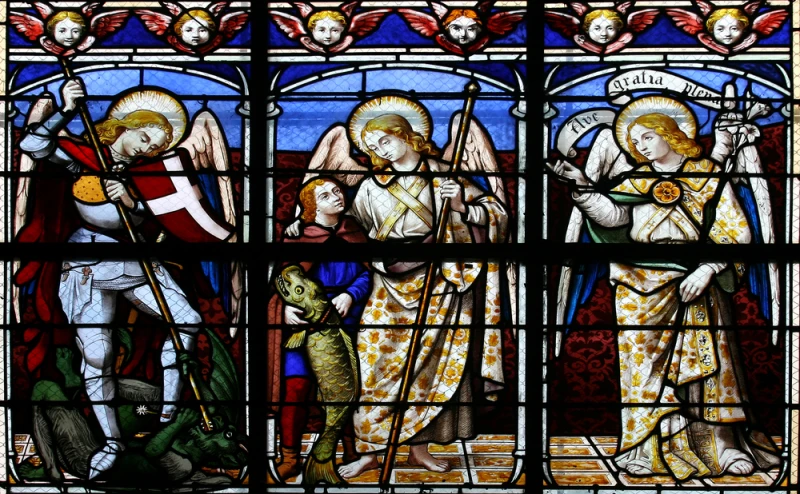

CNA Staff, Sep 29, 2025 / 04:00 am (CNA).
Many Catholics can, at the drop of a hat, recite the prayer to St. Michael the Archangel — the famous petition to that venerable saint to “defend us in battle” and “cast into hell Satan.”
In the culture of the Church, Michael is often accompanied by his two fellow archangels — Sts. Gabriel and Raphael — with the three forming a phalanx of protection, healing, and petition for those who ask for their intercession. The Church celebrates the three archangels with a joint feast day on Sept. 29.
St. Michael the Archangel is hailed in the Book of Daniel as “the great prince who has charge of [God’s] people.”
Michael Aquilina, the executive vice president and trustee of the St. Paul Center for Biblical Theology in Steubenville, Ohio, described Michael among angels as “the one most often named — and most often invoked — and most often seen in history-changing apparitions.”
Devotion to Michael, Aquilina told CNA, “has been with the Church from the beginning. And Michael has been with God’s people since before the beginning of the Church.”
Michael’s history in the Bible is depicted through Daniel, in Jude (in which he battles Satan for possession of Moses’ body), and in Revelation as he “wag[es] war with the dragon” alongside his fellow angels.
Michael, Aquilina said, was “a supremely important character who was there from the beginning of the story.” Rabbinic tradition holds that Michael was at the center of many of the great biblical dramas even if not explicitly mentioned.
He was an early subject of veneration in the Church, though Aquilina noted that the Reformation led to a steep decline in devotion to the angels — until the end of the 19th century, when Michael began an “amazing comeback journey” in the life of the Church.
Following a vision of Satan “running riot” on the planet, “Pope Leo composed three prayers to St. Michael, ranging from short to long,” Aquilina said. “The brief one, he commanded, should be prayed at the end of every Mass.”
This was a regular feature of the Mass until the Vatican II era, after which it came to an end — though Pope John Paul II in 1994 urged Catholics to make the prayer a regular part of their lives.
“St. Michael is there for us in the day of battle, which is every day,” Aquilina said.
The St. Michael Prayer: St. Michael the Archangel, defend us in battle. Be our protection against the wickedness and snares of the devil / May God rebuke him, we humbly pray / And do thou, O Prince of the Heavenly Host, by the divine power of God, cast into hell Satan and all the evil spirits who prowl about the world seeking the ruin of souls. Amen.
Gabriel appears regularly in Scripture as a messenger of God’s word, both in the Old and New Testaments. Daniel identifies Gabriel as a “man” who came “to give [him] insight and understanding,” relaying prophetic answers to Daniel’s entreaties to God.
In the New Testament, Luke relays Gabriel’s appearances to both Zechariah and the Virgin Mary. At the former, he informs the priest that his wife, Elizabeth, will soon conceive a child; at the latter he informs Mary herself that she will do the same. The two children in question, of course, were respectively John the Baptist and Jesus Christ.
Christian tradition further associates Gabriel with the apostle Paul’s reference in his First Letter to the Thessalonians to the “archangel’s call” and “the sound of the trumpet of God.”
“Judgment will begin with the archangel’s call and the sound of the horn,” Aquilina told CNA. “Thus we hear often of Gabriel’s trumpet.”
Media workers in particular have “good professional reasons to go to Gabriel,” Aquilina said.
“Since he is the Bible’s great communicator — the great teller of good news — he is the natural patron of broadcasters and all those who work in electronic media,” he said.
“For the same reason, he’s the patron saint of preachers … but also of postal workers, diplomats, and messengers.”
The St. Gabriel Prayer: O Blessed Archangel Gabriel, we beseech thee, do thou intercede for us at the throne of divine mercy in our present necessities, that as thou didst announce to Mary the mystery of the Incarnation, so through thy prayers and patronage in heaven we may obtain the benefits of the same, and sing the praise of God forever in the land of the living. Amen.
Lesser-known among the three great archangels, Raphael’s mission from God “is not obvious to the casual reader” of the Bible, Aquilina said. Yet his story, depicted in the Book of Tobit, is “something unique in the whole Bible.” In other depictions of angels, they come to Earth only briefly, to deliver a message or to help God’s favored people in some way.
“Raphael is different,” Aquilina said. “He stays around for the whole story, and by the end he’s become something more than an angel … he’s become a friend.”
In Tobit, Raphael accompanies Tobias, the son of the book’s namesake, as he travels to retrieve money left by his father in another town, helping him along the way and arranging for his marriage to Sarah.
The biblical account “has in every generation provided insight and consolation to the devout,” Aquilina said.
Notably, Raphael deftly uses the natural world to work God’s miracles: “What we would ordinarily call catastrophes — blindness, multiple widowhood, destitution, estrangement — all these become providential channels of grace by the time the threads of the story are all wound up in the end.”
“Raphael is patron of many kinds of people,” Aquilina said. “Of course, he’s the patron of singles in search of a mate — and those in search of a friend. He is the patron of pharmacists because he provided the salve of healing. He is a patron for anyone in search of a cure.”
He is also the patron saint of blind people, travelers, sick people, and youth.
“Raphael’s story,” Aquilina said, “remains a model for those who would enjoy the friendship of the angels.”
Prayer to St. Raphael: St. Raphael, of the glorious seven who stand before the throne of him who lives and reigns, angel of health, the Lord has filled your hand with balm from heaven to soothe or cure our pains. Heal or cure the victim of disease. And guide our steps when doubtful of our ways. Amen.
This story was first published on Sept. 29, 2023, and has been updated.
Read More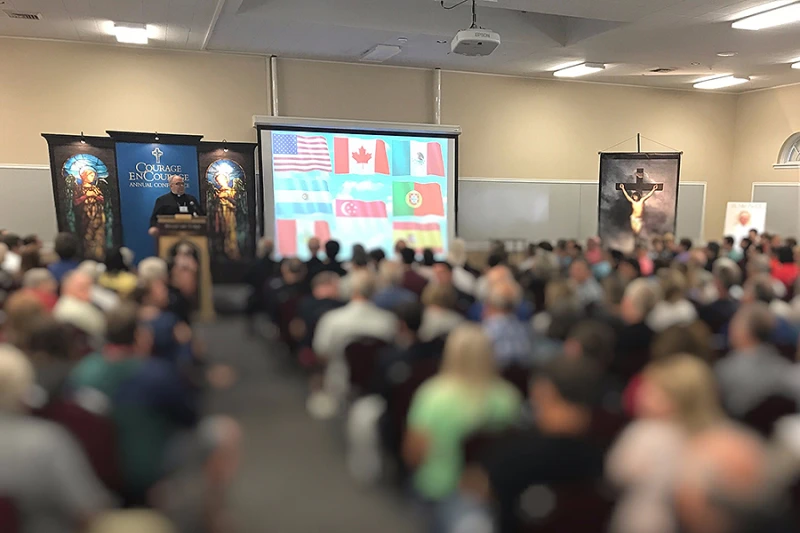

CNA Staff, Sep 26, 2025 / 07:00 am (CNA).
Courage International, the Catholic apostolate that helps men and women experiencing same-sex attraction “persevere on the path of holiness,” marked 45 years of ministry on Sept. 26, celebrating nearly half a century of helping individuals struggling with sexuality to “live a chaste life” in line with Church teaching.
The Connecticut-based organization traces its earliest roots to an effort started by New York archbishop Cardinal Terence Cooke, who in 1978 conceived of a same-sex attraction ministry and asked Father John Harvey, OSFS, to lead the effort.
Harvey, who died in 2010, authored the 1979 pamphlet “A Spiritual Plan to Redirect One’s Life,” offering a program for “homosexually-oriented persons” to “achieve a chaste, productive, and happy life.”
The apostolate held its first official meeting the following year on Sept. 26 at the Shrine of St. Elizabeth Ann Seton in Manhattan. In 1981 the group published the first version of its “Five Goals,” which include dedications to chastity, service, the sacraments, and fellowship.
Within a few years the program expanded to Canada, officially becoming an international organization; it also began to expand throughout the U.S. at the time.
An endorsement by the Holy See came in 1994. The group by this time had already begun hosting annual “Courage Conferences,” with Harvey publishing several new works on the ministry over the years.
The group’s offerings for those struggling with same-sex attraction include retreats, literature, online chat groups, and a men’s sports camp — a weekend of “team sports with encouragement, coaching, and an abundance of Christian fellowship” (where teams compete in an “annual epic battle for the coveted Harvey Cup”).
Father Brian Gannon, the executive director of Courage, said the group was originally founded to minister to men with same-sex attraction and eventually expanded to include women. A sister program, “EnCourage,” ministers to family members of those with same-sex attraction.
The group works primarily through chapters, which number around 160 worldwide and function as clergy-led support groups.
“There’s individual groups in various dioceses that are run by chaplains — either priests or deacons — and they meet on a regular basis, usually about once a week,” Gannon said.
Group members “come together, read through the goals, discuss their experiences and challenges during the week, and pray,” he said. “Prayer is absolutely central to it.”
Courage has a presence in numerous countries worldwide, including the Philippines, Singapore, and Poland. In addition to executive leadership, the group is overseen by an episcopal board of several bishops. “It’s fully sanctioned by the Church,” Gannon said.
Gannon himself came into the leadership role in 2024. Years before he helped to start a Courage chapter in Bridgeport, Connecticut. He was approached by the organization last year and asked to serve as director.
The priest took on that role in addition to his pastorship at St. Theresa Parish in Trumbull, Connecticut. “It’s a challenge,” he said with a chuckle. ”But you balance it as best you can. You always want to do more for both [roles].”
He described the men and women who take part in the apostolate as “truly inspirational,” while the organization’s staff, including another full-time priest, are “very hardworking.”
Looking to the future, Gannon said the group is hoping to expand its social media presence. He also said it is making efforts to contact each new bishop installed in the U.S.
“We’ve just started to reach out to newly appointed bishops, sending them a welcome letter and encouraging them to get in touch with us, letting them know we’d love to come and talk to them about starting a Courage chapter if they don’t have one,” he said.
Gannon said participants in the ministry do not seek a watered-down version of Catholic doctrine. “They want to follow exactly what the Church is teaching,” he said.
“The secular world has a twisted view of sexuality,” he said. “This is such a needed ministry. It helps people find peace.”
Read More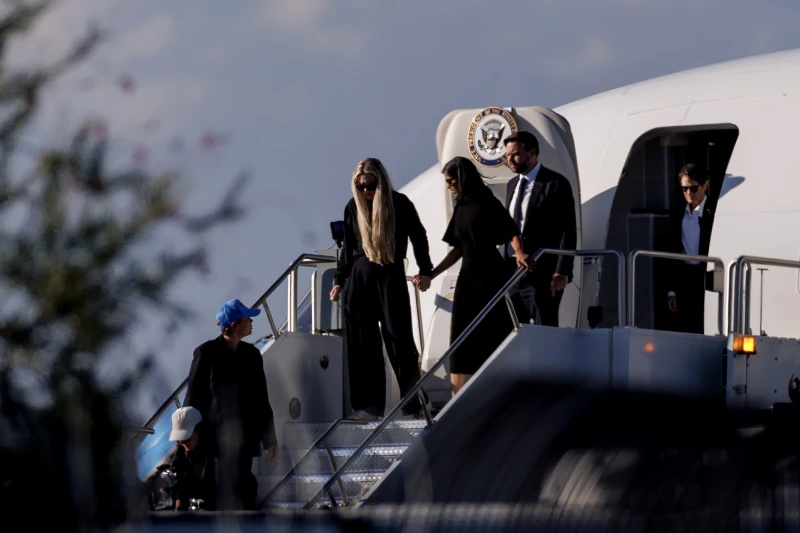

CNA Newsroom, Sep 13, 2025 / 10:05 am (CNA).
Erika Kirk, the widow of slain conservative activist Charlie Kirk, vowed to continue her husband’s work Friday night during an impassioned and deeply personal televised address that focused on the importance of faith and family life.
Appearing on Fox News just two days after her husband was shot and killed by an assassin’s bullet, fired from a rooftop on the campus of Utah Valley University where he was holding an outdoor event, she spoke for more than 16 minutes, maintaining her composure as she stood at a podium in her husband’s podcast studio, beside his empty chair.
“I will never, ever have the words to describe the loss that I feel in my heart,” said Erika Kirk, the mother of two young children, ages 1 and 3.
“I honestly have no idea what any of this means,” she said. “I know that God does, but I don’t. But Charlie, baby, I know you do, too. So does our Lord.”
“The evildoers responsible for my husband’s assassination have no idea what they have done,” she said.
“They killed Charlie because he preached a message of patriotism, faith, and of God’s merciful love.”
Here are other highlights from her remarks:
She revealed that she had not yet told the couple’s 3-year-old daughter of her father’s death.
“When I got home last night, Gigi, our daughter, just ran into my arms. And I talked to her, and she said, ‘Mommy, I missed you.’ I said, ‘I missed you too, baby.’
“She goes, ‘Where’s daddy?’ She’s 3. I said, ‘Baby, daddy loves you so much. He’s on a work trip with Jesus, so he can afford your blueberry budget.'”
She talked about why her husband advocated so passionately for marriage and family life.
“Charlie always believed that God’s design for marriage in the family was absolutely amazing. And it is. It is. And it was the greatest joy of his life. And over and over, he would tell all these young people to come and find their future spouse, become wives and husbands and parents. And the reason why is because he wanted you all to experience what he had, and still has,” she said.
“He wanted everyone to bring heaven into this earth through love and joy that comes from raising a family. It’s beautiful. Charlie always said that if he ever ran for office —I know a lot of you asked if he ever was going to — but privately, he told me if he ever did run for office, that his top priority would be to revive the American family. That was his priority.
“One of Charlie’s favorite Bible verses was Ephesians 5 verse 25: ‘Husbands, love your wives as Christ loved the church and gave himself up for her.’
“My husband laid down his life for me, for our nation, for our children. He showed the ultimate and true covenantal love,” she said.
Erika, who is a baptized Catholic, witnessed to the Christian faith she and her husband shared.
“Charlie always said that when he was gone, he, he wanted to be remembered for his courage and for his faith,” she said.
“And one of the final conversations that he had on this earth, my husband witnessed for his Lord and Savior, Jesus Christ. Now and for all eternity, he will stand at his Savior’s side, wearing the glorious crown of a martyr.”
During the broadcast, Erika Kirk urged others to make faith central to their lives, as her husband had done.
“But most important of all, if you aren’t a member of a church, I beg you to join one, a Bible-believing church,” she said.
“Our battle is not simply a political one above all. It is spiritual. It is spiritual. The spiritual warfare is palpable. Charlie loved his Savior with all of his heart, and he wanted every one of you to know him, too. He wanted everyone to know that if they confess, if they confess the Lord Jesus Christ who rose from the dead, then they will be saved.
“Hear me when I say this. Nobody is ever too young to know the gospel. Nobody. Nobody is ever too young to get involved with saving this beautiful country, this country my husband loved and still loves. And nobody is ever too old, either.”
She vowed to continue Charlie’s work with Turning Point USA, the conservativve advocacy organization he founded, and said the campus speaking tour he had just embarked on would go on.
“If you thought that my husband’s mission was powerful before, you have no idea. You have no idea what you just have unleashed across this entire country and this world. You have no idea,” she said.
“You have no idea the fire that you have ignited within this wife. The cries of this widow will echo around the world like a battle cry.
“To everyone listening tonight across America, the movement my husband built will not die,” she said. “It won’t. I refuse to let that happen. It will not die.”
Read More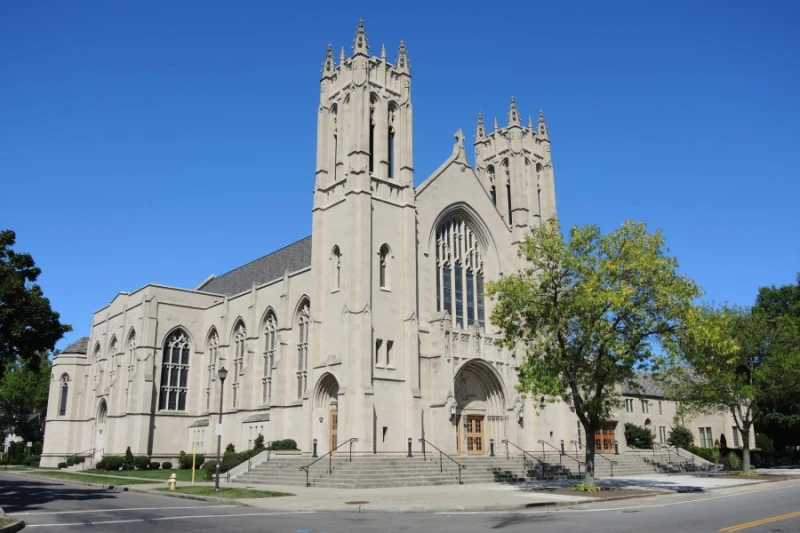

CNA Staff, Sep 8, 2025 / 12:37 pm (CNA).
One of the nation’s largest sexual abuse settlements unfolded in a federal bankruptcy court in Rochester, New York, on Friday, bringing about resolution for the nearly 500 survivors of child sex abuse by clergy within the Diocese of Rochester.
After a six-year legal battle, the U.S. Bankruptcy Court for the Western District of New York approved a $246 million settlement, which will average approximately $500,000 per survivor.
The settlement concludes a process that began when the diocese filed for Chapter 11 bankruptcy in 2019 following the passage of the New York Child Victims Act, which allows abuse victims to file civil lawsuits until they are 55 years old. The law temporarily lifted the statute of limitations, enabling survivors to pursue claims against their abusers.
Bankruptcy attorney Ilan Scharf described the day as a “milestone for survivors in the Rochester area after being the first bankruptcy filed in New York” after the passage of the Child Victims Act.
Survivors expressed a mix of emotions, with many ready to move forward.
Gregory Stanley noted: “The healing can start now, which is more important than the money. I’m just glad it’s over.” Merle Sweet echoed this sentiment, saying: “Relief. It’s all finally over,” while John McHugh added: “I am actually, for the first time, excited for the future.”
Attorney Mitchell Garabedian, representing 97 victims, emphasized the survivors’ resilience, stating in a press release that the process validated their experiences and contributed to a safer world for children, setting an example of determination for others globally.
Survivor Carol Dupre shared the profound impact on her community. “This was a real wounding of a lot of people and their families. There’s literally thousands upon thousands of people that have been negatively affected by what happened to us,” she said.
Bishop Salvatore Matano of the Diocese of Rochester addressed the media after the settlement, offering a message of hope and regret. “I pray that this is certainly a step toward their healing,” he said of the victims. “I apologize to them. I deeply regret what transpired in their lives, which, as the judge said, never should have happened.”
He continued: “While this process legally concludes today, I take them in my heart every day of my life, and every time I approach the altar, they will be in my memory, asking the good Lord to give them the strength and the courage to continue on, and that they be blessed in the years ahead.”
Matano issued a letter the same day in which he said the “settlement provisions can be effectuated” in the next several weeks. Of the $246 million settlement, $55 million will be paid by the diocese and affiliated entities, according to the letter, and the rest by the diocese’s insurers.
The bishop concluded the letter addressing abusers, saying he entrusts “them to Jesus, the final judge, and I pray they have acknowledged their offenses and used their remaining years to seek his mercy and have prayed fervently for those they have hurt.”
Read More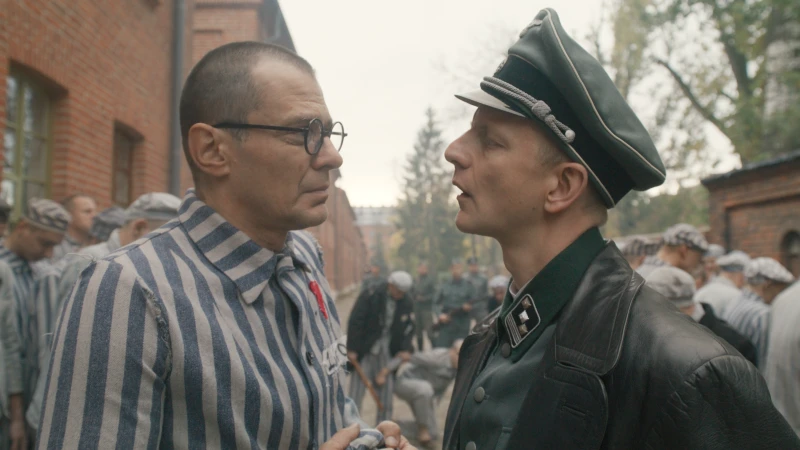

CNA Staff, Sep 6, 2025 / 06:00 am (CNA).
Anthony D’Ambrosio grew up Catholic and always viewed his faith as one of the most important aspects of his life — even entering seminary for a brief period of time. However, he felt called to leave seminary and go into youth ministry. He fell in love and was about to get engaged when he was diagnosed with a life-altering medical condition — a chronic mold infection with a major symptom being severe and even life-threatening insomnia.
D’Ambrosio’s relationship ended, he couldn’t maintain a job, and his faith unraveled. It was during the sleepless nights that he began to discover the story of St. Maximilian Kolbe, which led to creating a movie about the saint — “Triumph of the Heart.” It will be released in theaters on Sept. 12.
St. Maximilian Kolbe was a Polish Franciscan friar, priest, and martyr who volunteered to die in place of another man in the German death camp of Auschwitz. Kolbe spent the last 14 days of his life in a starvation bunker alongside nine other men. “Triumph of the Heart” focuses on Kolbe’s last days on earth spent in the starvation bunker.
While writing the film, D’Ambrosio began to see his own battle with insomnia as “being a bit of a stand-in for starvation,” he told CNA in an interview. The fact that Kolbe was also able to accompany three other men “to that miracle of staying alive for 14 days without food or water with him” was also meaningful for D’Ambrosio because “I knew that if Kolbe could have helped men in that situation to find a reason to live, that he could help me to find a reason to live.”
As D’Ambrosio spent more and more time with Kolbe’s story, he began to “see what true sanctity looked like, what love looked like.”
“This idea that he had volunteered to take on the suffering of these men in order to be with them — that really began to melt my own heart and to open me back up to God’s presence,” he added.
It was then that D’Ambrosio began his journey to create the film. He began to write the script, pilgrimaged several times to Poland to learn more about Kolbe, lived with the Franciscan friars in Poland, studied his story with the librarian who handles his archives, and ultimately worked with an American crew and partnered with Poles to tell the martyr’s story.

Despite facing numerous challenges while making the film, D’Ambrosio said the most beautiful aspect was seeing “how generous the Catholic world has been.”
“Triumph of the Heart” was an entirely crowdfunded movie — meaning all production costs were covered thanks to donations from individuals.
D’Ambrosio shared that not only did everyday Catholics generously donate financially, but they also donated airline miles for the crew to be able to travel and many volunteered to go to Poland on their own dime to help with the production while the team was there for three months filming.
“I mean the whole movie is just a compilation of the stories of people who have sacrificed immensely in order to tell the story,” D’Ambrosio said.
When reflecting on the life and story of Kolbe, D’Ambrosio said it serves as a great reminder to Catholics that “when everything is hopeless, really, truly, love has the power to overcome darkness and to change the world.”
“The choice to have to maintain love and hope and faith in the face of darkness is the most powerful expression of God’s love and presence that any person can offer the world,” he added.
Despite having his life’s work destroyed by the Nazis and witness his country of Poland be conquered and destroyed by the Germans, Kolbe maintained his faith, and for D’Ambrosio “that has been the part of his life that has resounded the most throughout history and throughout time.”
“I think for anybody that is struggling in any way in their lives right now, they can look at his suffering and look at the fruit of it and make sense in many ways — maybe not make sense but they can like find a balm and find a compass for their own action the way that I did,” he said.
D’Ambrosio emphasized that the movie is primarily about hope and said he finds it “very apropos that this year was declared to be a Jubilee of Hope and that somehow Kolbe’s movie and his story is coming out in the jubilee year.”
The filmmaker said he hopes viewers “will come away with this catharsis — with this feeling of all of that was worth it if that’s what heaven is like.”
“I think that the way that the movie leaves people is like a little promise of ‘Hey, it’s going to be OK. The place we’re going is better and all of the suffering and trials and tribulations that you go through here now and all the crosses that you bear, they will be fully redeemed and you will be completely filled up and made new.’”
Read MoreHere’s the evidence. Both times that he won the presidency, he beat female candidates. The man who beat him last time lost mental cognition halfway through the battle, forcing the Democrats to install a Black-Indian female candidate with six vacillating accents who couldn’t take softball interviews to save her life and struggled whenever she was required to speak rather than laugh. Divine intervention?
Read More